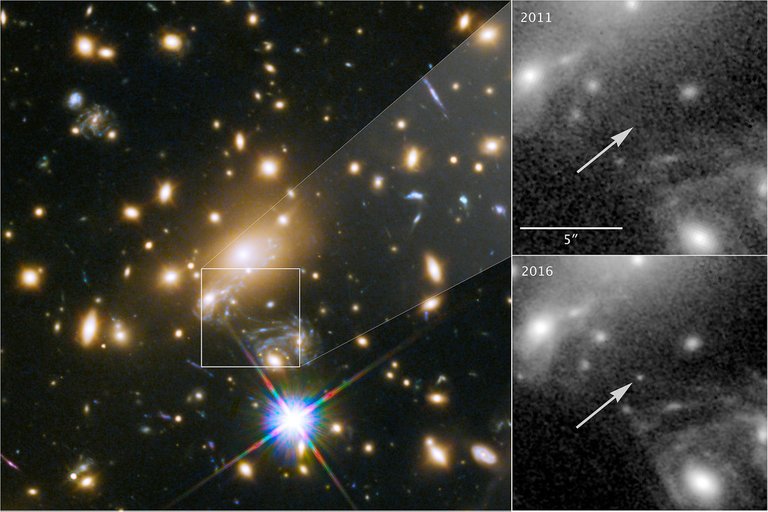
The furthest ancient star was discovered by astronomers! The ultimate blue-hot stars discovered by these astronomers lived when the universe was only 4.4 billion years after the Big Bang.
Must you know archaeologists, do not you? Usually, these archaeologists dig and search dinosaur bones or trace the ancient tombs, to examine the history of life on Earth. Well, astronomers also have similarities with archaeologists. Both examine ancient relics in order to understand the past.
The difference is, astronomers, do not need to dig into Earth to trace the past. What astronomers do is to observe distant objects in the universe. When we see the object of the night sky, we are actually looking into the past.
There is nothing in the universe that can pass quickly and instantly. Not even light. The light from distant stars and galaxies takes billions of years to get to Earth. So, when we look at the sky object, it is seen that the condition of the object is several years or even billions of years ago when light begins its journey.
The star with the farthest record that was successfully observed was at a distance of 9 billion light years. That means, we see the condition of the star when 9 billion years ago! At that time, the universe was still very young. Only a third of his age now, or about 4.4 billion years. The blue supernatural star Lensed Star 1 code a.k.a LS 1 is found in the MACS J1149-2223 galaxy cluster. The LS1 star is a hot, blue, blue star with a temperature between 11000ºC - 14000ºC.
Effect of Gravity Lens
To be able to see and observe a single star in the universe is usually not easy. But it's not impossible. With a bit of luck, this ancient starlight can experience strengthening/magnification 2000 times so it can be observed by the Hubble telescope.
The strong pulling force of a massive object can deflect light from the star behind them. So the massive object acts like a magnifying glass that reinforces the background star's light so that the star can be observed.
At that time, April 2016, astronomers were about to observe the supernova of Refsdal, the explosion of a star that it had discovered from its gravitational lens. Apparently, astronomers actually see no other bright light sources that appear in the galaxy that became the home supernova Refsdal. Apparently, the starlight's light was amplified so that it could be seen by the Hubble telescope.
Interestingly, the ancient starlight observed by astronomers was magnified by two objects. The first by a giant group of galaxies and the second object is a mysterious object 3 times the mass of the Sun in the cluster of galaxies. The second lens by a compact massive object is known as a micro-gravity lens.
The discovery of LS1 has an important meaning. The effect of a microgravitational lens is usually caused by neutron stars or compact black holes. These two compact objects are generally not easily detectable. When this compact object causes the effect of microgravity lens, astronomers can study and estimate how many neutron stars and black holes in the cluster of galaxies. Astronomers can also study the structure of clusters of galaxies, neutron stars, black holes, the composition of the universe, and the existence of dark matter.
reference :
https://langitselatan.com/2018/04/23/bintang-terjauh-di-alam-semesta/
Congratulations! This post has been upvoted from the communal account, @minnowsupport, by alf4t1h from the Minnow Support Project. It's a witness project run by aggroed, ausbitbank, teamsteem, theprophet0, someguy123, neoxian, followbtcnews, and netuoso. The goal is to help Steemit grow by supporting Minnows. Please find us at the Peace, Abundance, and Liberty Network (PALnet) Discord Channel. It's a completely public and open space to all members of the Steemit community who voluntarily choose to be there.
If you would like to delegate to the Minnow Support Project you can do so by clicking on the following links: 50SP, 100SP, 250SP, 500SP, 1000SP, 5000SP.
Be sure to leave at least 50SP undelegated on your account.